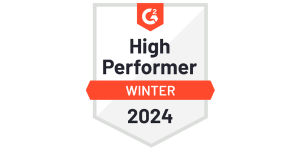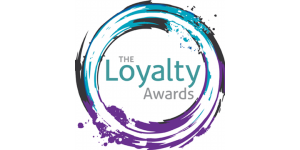18 Nov

It could be ironic that an emotion, loyalty, plays a major role in the performance of a business, which is strictly approached from numeric aspects today. There are hundreds of platforms out there to calculate the many monetary aspects of the company. Then, we have rewarding systems to celebrate the outcomes derived from these platforms. However, to measure customer loyalty, a notion majorly connected to emotions or intentions may need to be clarified. Noticing how to measure customer loyalty has become necessary for the commerce sector, where the ecosystem is far more crowded than any other business. And there’s no need to say what they call “customer” is a bit more diverse.
Why Is It Important to Measure Customer Loyalty?
The landscape of B2B relationships is complex and demands a nuanced understanding of loyalty. Unlike standard market dynamics, loyalty in B2B extends beyond the increasing number of partnerships a brand fosters. Each new partnership shapes a unique channel, incorporating the partner’s subchannels, creating a web of interconnected systems. These systems thrive on a blend of tangible and intangible elements.
The focus often transcends mutual benefits or material gains in enduring, robust channel relationships. Here, the essence of loyalty becomes indispensable. It’s not just about economic exchanges; it’s about cultivating a sense of commitment and shared values. This shift is where channel management software is pivotal, elevating operations to a digital and streamlined plane. Integrating B2B loyalty platforms into these systems is crucial, but it hinges on a clear definition of loyalty in the context of your brand’s unique language. With this foundational understanding, the entire structure can avoid misalignment. Thus, knowing how to measure customer loyalty isn’t just beneficial; it’s essential to ensuring the coherence and success of these multifaceted B2B relationships.
Embodying “Loyalty” Through Loyalty Behavior
Before you start a channel loyalty program, measuring the channel status quo is beneficial. Firstly, pay attention to customers who demonstrate loyalty behavior to measure customer loyalty. Tracking and monitoring them and then distilling this data into meaningful information is the foundation of a future loyalty strategy. You can then assign particular actions to these pieces of information and eventually build up a whole pattern. The main concern is that it is sometimes hard to integrate a template to achieve this.
For B2C, the performance is strictly linked to more direct results. Is the particular customer coming back? Are they referring us to their inner circle? But for B2B, building up a trust network takes time. You should expect growth exponentially through channels and subchannels. For this reason, many B2B brands adopt B2B loyalty programs to handle the customer loyalty department. B2B loyalty has many variants that are also partly effective in the offline world, and only a next-gen platform that covers these aspects can handle it.
Best Metrics to Measure Customer Loyalty
Measurement is the first step in customer loyalty management. For a B2C, it could be repurchasing levels, multiple product purchases, or whether they refer you to their friends and family. In short, how much they are willing to come back. A degree of retention is necessary to talk about customer loyalty. And monitoring these behaviors in question at regular intervals will work. To measure customer loyalty, B2C brands usually track customers based on the following, that we can call as part of their customer loyalty index:
- Customer lifetime value
- Repeat purchase rate
- Net promoter score
As you can see, these metrics are exclusively about and aimed at retention. For B2C, this makes perfect sense for the customer-brand relationship. For B2B, though, as we emphasized several times in various contexts, requires a broader view. Therefore, common B2C concepts being compared, like customer retention vs customer loyalty, do not apply in B2B the same way they would in B2C. It does not work similarly mechanically, nor has a formula.
For businesses operating in the retail sector, for instance, there is another side to the company than B2C relationships. Backstage transactions in B2B take place on the wholesale level, which brings us to channel relationships. As mentioned above, this expands the emotional element all across the loyalty strategy, and a next-gen platform covering all, like Apex Loyalty, can address such.
Determining the Metrics for Customer Loyalty
How can we spot the metrics that would fit in this complex B2B landscape while yielding results that would positively affect sales? Apex Loyalty offers the following features to address the many variants: A personalized community platform, on-site engagement utilities, tailored segmentation and campaign management points, marketing automation tools, and built-in rewards. As flexible and open to custom-made touches, its standardization enables tracking customer loyalty over time. For this, Apex Loyalty deploys the below metrics to measure customer loyalty:
- Enrollment Rate
- Redemption rate
- Active Engagement Rate
- Point Accumulation Rate
- Content Consumption Rate
Find further information about them and how they contribute to customer loyalty success here. Enabling benchmarking through effective scaling and helping you spot the weaknesses in your B2B loyalty strategy, Apex Loyalty will contribute tremendously to reshaping your plans.
You can read our previous post on https://www.apexloyalty.com/the-future-of-customer-loyalty-programs/











